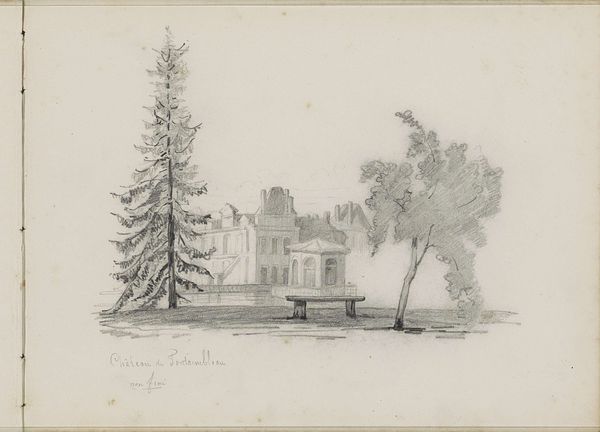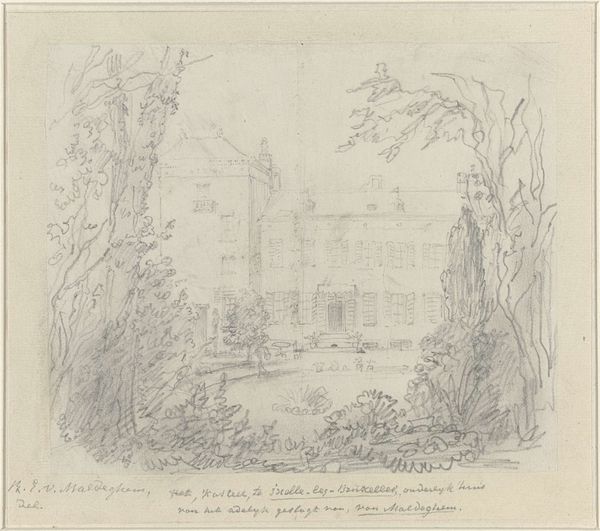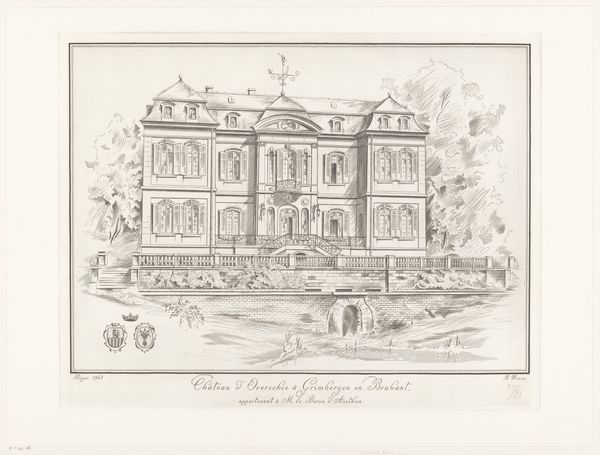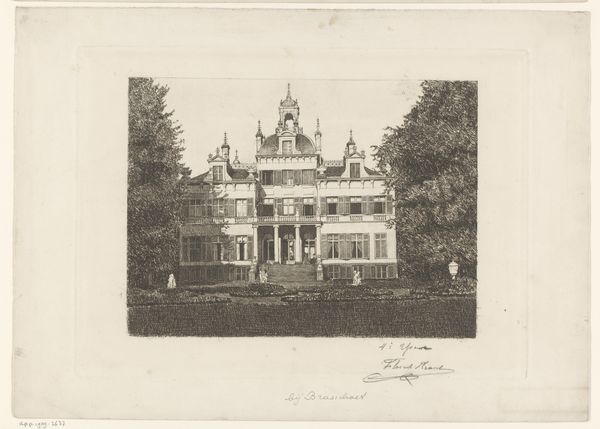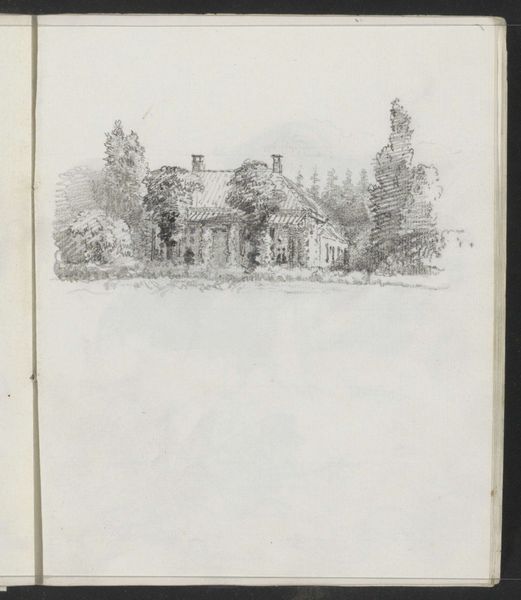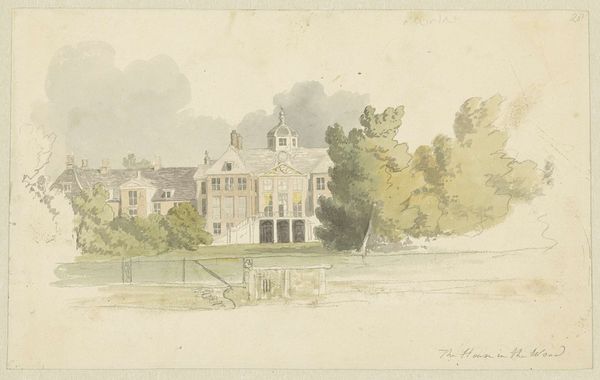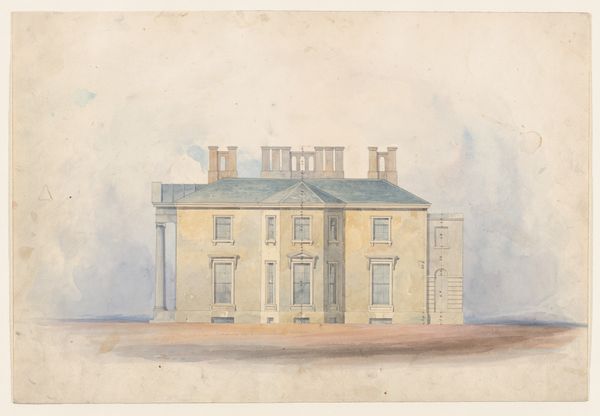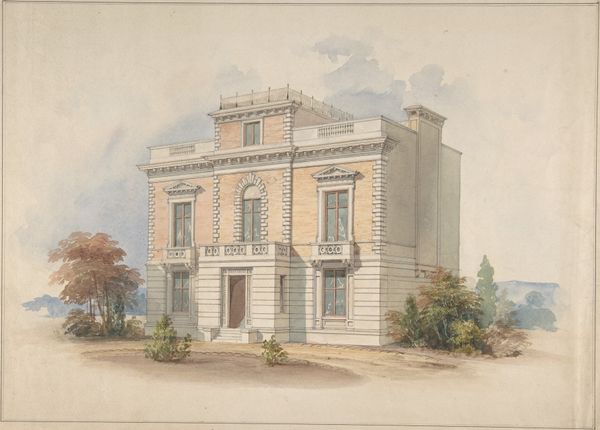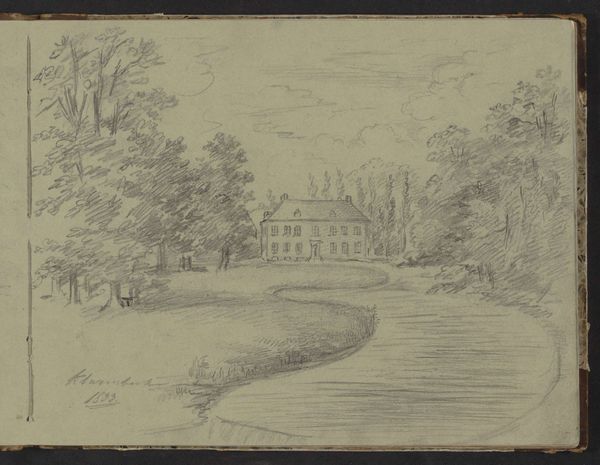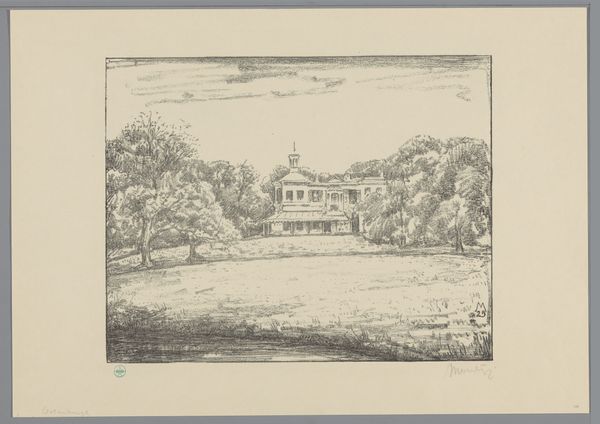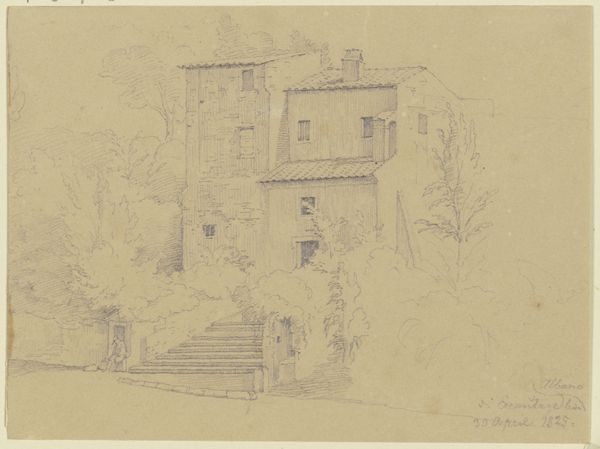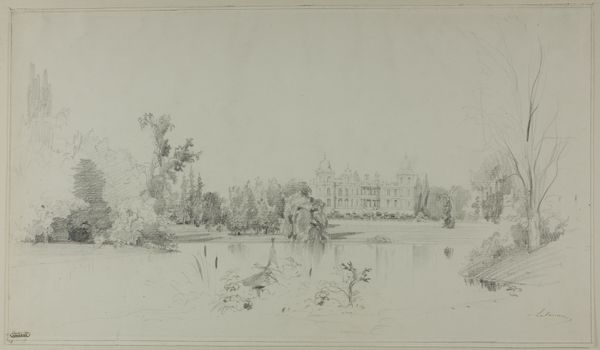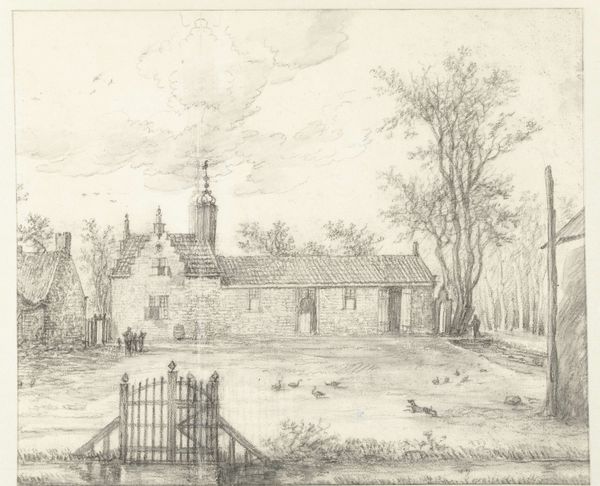
drawing, architecture
#
drawing
#
neoclacissism
#
landscape
#
etching
#
architecture
Dimensions: 5 7/8 x 7 1/2 in. (14.92 x 19.05 cm) (sheet)
Copyright: Public Domain
Curator: This is Karl Ludwig Wilhelm von Zanth's "Paris (View of an Estate)," created around 1830. The work, residing here at the Minneapolis Institute of Art, is a detailed drawing. What’s your initial reaction? Editor: Austere. The pale grey tonality, along with the precise, almost clinical lines, conveys a sense of detachment, doesn't it? It feels like an architectural study rather than an embrace of Parisian life. Curator: Precisely! Zanth, working within Neoclassical conventions, seems most concerned with accurately depicting the building's design. The careful execution speaks volumes about the artist's training and the prevailing academic standards. One can imagine the hours spent rendering the structure. The paper and implement are humble but are handled in a high art way. Editor: Yes, and the setting, an estate during a period marked by growing social inequality and upheaval, raises questions. Who occupied this estate? How does its opulence contrast with the realities of Parisian working class during this period? It looks so distant and cut off from life... There is someone in the courtyard and another man gardening in the garden as if the artist is deliberately indicating class and social status. Curator: An interesting observation! Certainly, access to such estates was heavily dictated by social class. Zanth is drawing from the design ideas and social engineering present within his time. The etching-like marks denote social and functional relationships. Editor: Absolutely. It makes you wonder about Zanth’s intentions in selecting this particular subject. Is it simply an aesthetic exercise, or does it implicitly endorse the power structures it depicts? Is it a work for hire to present the family who live there? And who gets to see and consume this artwork, which acts as an agent that communicates across time? Curator: That invites a wider discussion. As a materialist, I think that exploring its genesis, patronage and social status it had among people during that era can bring in more nuanced perspectives of what we know about Neoclassicism today. It encourages us to question how artistic output can actively shape social relationships. Editor: Right, that makes a lot of sense. Well, it's been helpful to engage with the social contexts enmeshed in its visual language and materiality. It underlines the urgency for a nuanced understanding. Curator: Agreed, thinking through production, material and its location in social space definitely made the work less 'detached', or ‘clinical' than it appeared to be!
Comments
No comments
Be the first to comment and join the conversation on the ultimate creative platform.
